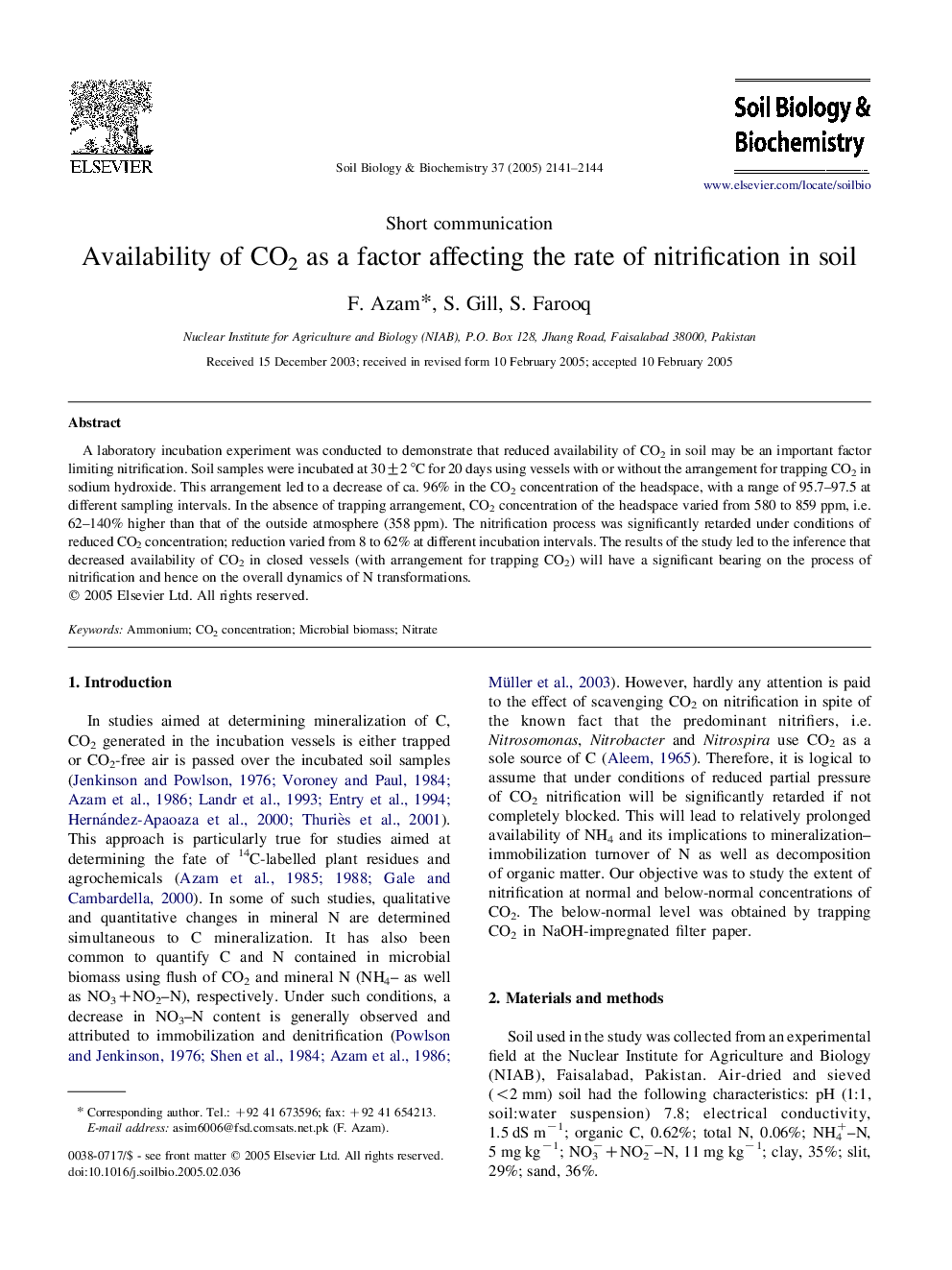| Article ID | Journal | Published Year | Pages | File Type |
|---|---|---|---|---|
| 2027258 | Soil Biology and Biochemistry | 2005 | 4 Pages |
Abstract
A laboratory incubation experiment was conducted to demonstrate that reduced availability of CO2 in soil may be an important factor limiting nitrification. Soil samples were incubated at 30±2 °C for 20 days using vessels with or without the arrangement for trapping CO2 in sodium hydroxide. This arrangement led to a decrease of ca. 96% in the CO2 concentration of the headspace, with a range of 95.7-97.5 at different sampling intervals. In the absence of trapping arrangement, CO2 concentration of the headspace varied from 580 to 859 ppm, i.e. 62-140% higher than that of the outside atmosphere (358 ppm). The nitrification process was significantly retarded under conditions of reduced CO2 concentration; reduction varied from 8 to 62% at different incubation intervals. The results of the study led to the inference that decreased availability of CO2 in closed vessels (with arrangement for trapping CO2) will have a significant bearing on the process of nitrification and hence on the overall dynamics of N transformations.
Related Topics
Life Sciences
Agricultural and Biological Sciences
Soil Science
Authors
F. Azam, S. Gill, S. Farooq,
